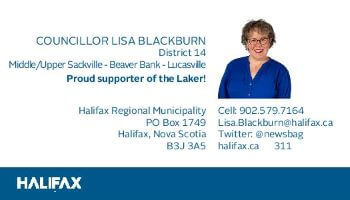The following is written by freelance journalist Chris Benjamin and submitted to The Laker News by Quest as part of the Powered By Communities communication campaign.
HRM: In January 2019, Halifax City Council declared a climate emergency and asked its staff for a new 30-year climate plan. “We had a year to do everything,” says Shannon Miedema, Manager of Energy & Environment.
“Everything” included deep engagement with more than 250 government departments, utilities, non-profits, academics, businesses, Mi’kmaq communities, African Nova Scotian communities, Acadian groups and young people.
The plan, which they called HalifACT 2050, was delayed until June by COVID-19. Miedema worried its ambitions wouldn’t survive an impending financial crisis.
The plan’s goals included making all new buildings net-zero (producing as much energy as they use) by 2030, retrofitting all existing buildings by 2040, all new vehicle sales being electric by 2030, having completely net-zero municipal operations by 2030, vastly expanding public transit, active transportation corridors and greenspaces, and ultimately the near elimination of greenhouse gas emissions by 2050.
That’s a 5.8 million metric tonne reduction in carbon dioxide equivalent (CO2e) emissions. Consider this: just one metric tonne of CO2e is equivalent to driving 216,000 cars for an entire year.
The investments in energy efficiency, district energy systems (efficiently networked heating and cooling systems for multiple households), and large solar and wind installations will generate 170,000 person-years of employment and save $22 billion over the life of the plan.
Now that the plan has been accepted and received financial support, Miedema has noticed a change in procedure at HRM, with staff from other departments consulting her about reports she didn’t know existed, seeking a climate perspective.
“We’re doing an electric vehicle strategy that will enable us to work on supplying recharging facilities,” she says. “We’re working on a retrofit plan for our 300 municipal buildings. When we do scheduled maintenance, we can now work with operations to check the insulation and energy production.”
As it implements such action, working closely with key stakeholders, the city hopes to become a national leader in climate action and create a better, more livable city.
Error, group does not exist! Check your syntax! (ID: 9)














